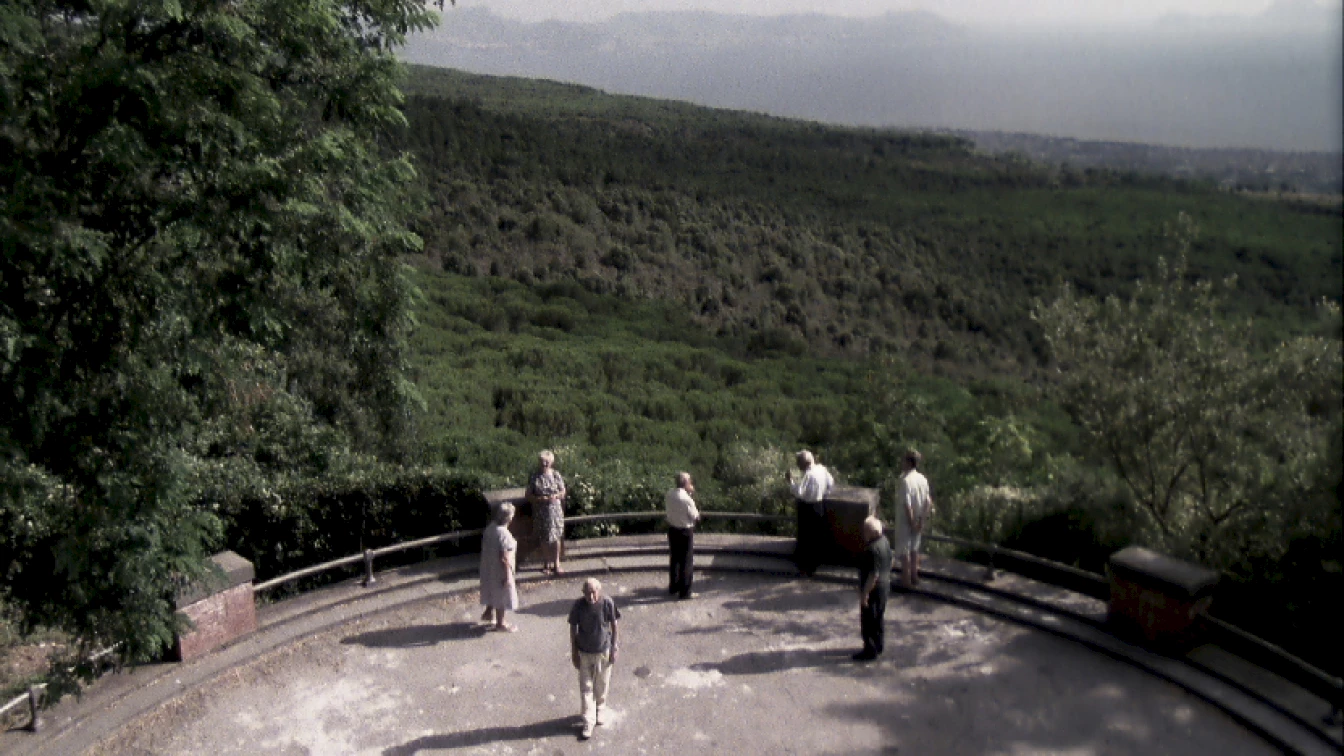
Rosa Barba, The Empirical Effect, 2010. 16mm film transferred to video, color, sound; 22 min. Film still © Rosa Barba.
In the past year of the global pandemic produced by COVID-19, the dependence on technology and digital devices which now characterise our way of living and relating has become increasingly evident. During the enforced confinement we have related to the world, and lived, through screens, including our access to culture. We have visited online exhibitions and even viewed certain films through so-called ‘exhibition cinema’; films that were created for an immersive experience – if it be through the analogue quality of the image, the use of a projector, a focus on the haptic – are now being viewed in digital format and on individual screens. The very same artworks that question the idea of progress through an emphasis on technological obsolescence have been ‘translated’ into ones and zeros.
Some artists – though few – agreed, unusually, to show a selection of their film works online, in particular those works that are less reliant on the physical exhibition space. This is the case for Rosa Barba and her film The Empirical Effect (2010) from the collections of Museo Reina Sofía, Madrid, which despite being filmed on 16 mm was conceived to be shown in digital format at museums and movie theatres. On the suggestion of her gallery Vistamarestudio in Milan, Barba authorized the online presentation of the work for the Italian public. This turned out to be a wonderful experience to reach new audiences such as the relatives of some of the actors who appear in the film, and who later wrote to the artist, excited and grateful for having been able to see their family on screen years later.
It is stemming from this exceptional circumstance that The Empirical Effect is now being shown in the context of this ePub, dedicated to two apparently antithetical concepts – Degrowth and Progress. Barba’s film offers a vision for another pair of concepts that appear throughout her filmic work, Nature and Technology – with some links that point to this debate. Through various lines of enquiry, from exploring the desert as a nuclear garbage dump (seen in Bending to Earth, 2015, also in the Museum’s collection), considering the cosmos, or melting glaciers, the artist confronts us with the ways in which human beings have made use of natural resources and the capacity of nature to preserve a record of this relationship. Her proposals function as a metaphor that causes us to think about the mechanisms that articulate our time.
The Empirical Effect starts with a warning. A serious voice, as serious as the facts it conveys, warns us of the danger of the eruption of Mount Vesuvius, whose natural resources (silver, nitrate and spring water) remain hidden. The voice reminds us that it has erupted more than twenty times throughout its known history. The warning puts us in a state of alert for what we are supposed to see, but that will never appear on the screen, in the same way that the inhabitants of the so-called ‘red zone’ who live out their day-to-day in a constant fear to a danger that never happens.
Archival footage, shots of abandoned spaces and images of obsolete earthquake gauges resonate like post-apocalyptic residue of an earlier eruption. Vesuvius, the film’s protagonist, appears imposing on screen, but so does the city of Naples and its neighbouring towns, which grow excessively and colonise the mountainside, occupying areas near the crater in an attempt to colonize the object of their own threat.
The Vesuvius observatory, built near the crater in 1845, is now in disuse, but its memory is preserved in many documents. Living memory, which survivors of the last eruption of 1944 treasure, is shown to us for its amazing capacity for adaptation. ‘There is a continuous interaction between the people and the volcano, the volcano and the people who live there. A kind of curse, and, at the same time, a blessing, because the microclimate is perfect. But it is very strange that after such horrible destruction, you can see written on the Torre del Greco: “Posta fata resurgo”. After the catastrophe, I will rise again. This way of thinking cannot be found anywhere else.’ The survivors laugh, and sing, and observe and dance erratically, as if alienated by the effect of the tension and the volcano, but they overflow with life and community. Barba reminds us, there is hope.
In this sense, and returning to the initial reflection, we are left to ask ourselves: ‘What will survive the storm of progress? Digitization may have quickly pushed photochemical film into mass-cultural obsolescence, but as a preservation medium its stability remains unparalleled. Archivists fear the unreliability of electronic formats will lead us into a digital dark age, but film will last. Perhaps we will, too, if we can find ways to cooperate and live together.’1
3 February 2021
Translation from Spanish: Madeleine Stack
The views and opinions published here mirror the principles of academic freedom and do not necessarily reflect the views or positions of the L'Internationale confederation and its members.